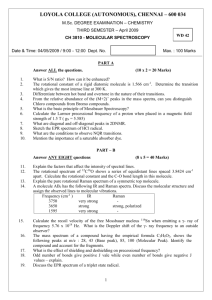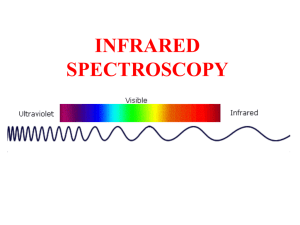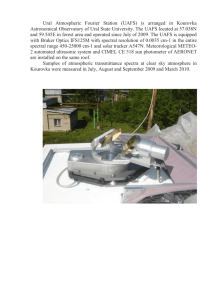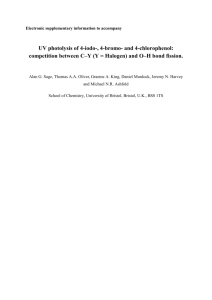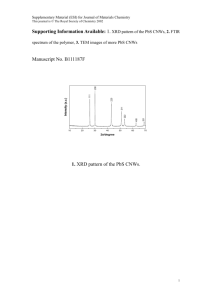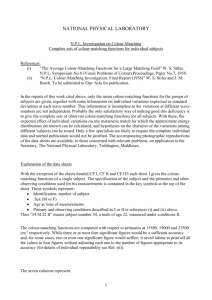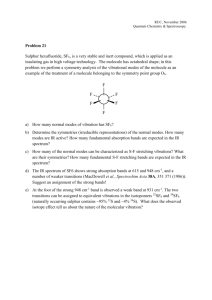Tutorial
advertisement
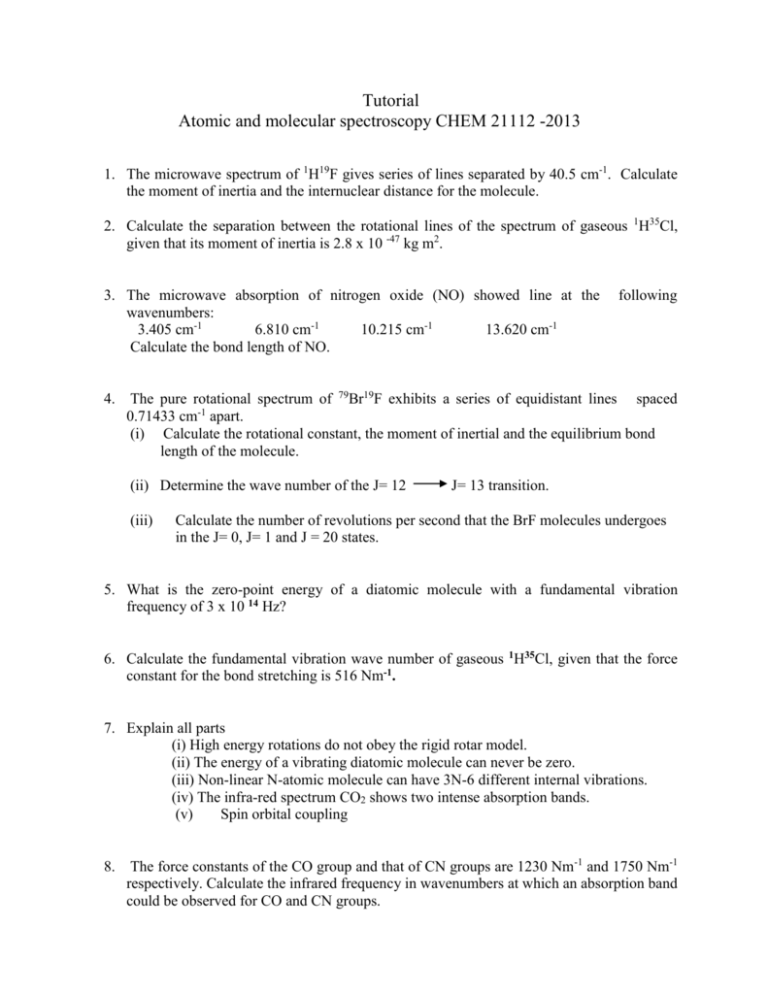
Tutorial Atomic and molecular spectroscopy CHEM 21112 -2013 1. The microwave spectrum of 1H19F gives series of lines separated by 40.5 cm-1. Calculate the moment of inertia and the internuclear distance for the molecule. 2. Calculate the separation between the rotational lines of the spectrum of gaseous 1H35Cl, given that its moment of inertia is 2.8 x 10 -47 kg m2. 3. The microwave absorption of nitrogen oxide (NO) showed line at the wavenumbers: 3.405 cm-1 6.810 cm-1 10.215 cm-1 13.620 cm-1 Calculate the bond length of NO. following 4. The pure rotational spectrum of 79Br19F exhibits a series of equidistant lines spaced 0.71433 cm-1 apart. (i) Calculate the rotational constant, the moment of inertial and the equilibrium bond length of the molecule. (ii) Determine the wave number of the J= 12 (iii) J= 13 transition. Calculate the number of revolutions per second that the BrF molecules undergoes in the J= 0, J= 1 and J = 20 states. 5. What is the zero-point energy of a diatomic molecule with a fundamental vibration frequency of 3 x 10 14 Hz? 6. Calculate the fundamental vibration wave number of gaseous 1H35Cl, given that the force constant for the bond stretching is 516 Nm-1. 7. Explain all parts (i) High energy rotations do not obey the rigid rotar model. (ii) The energy of a vibrating diatomic molecule can never be zero. (iii) Non-linear N-atomic molecule can have 3N-6 different internal vibrations. (iv) The infra-red spectrum CO2 shows two intense absorption bands. (v) Spin orbital coupling 8. The force constants of the CO group and that of CN groups are 1230 Nm-1 and 1750 Nm-1 respectively. Calculate the infrared frequency in wavenumbers at which an absorption band could be observed for CO and CN groups. 9. Analysis of the fundamental, 1st overtone and 2nd overtone bands of HCl leads to the following equation for the vibrational enegy levels in the ground state. ν = 2990.6 (v + 1/2) - 52.63 (v + 1/2)2 cm-1 (i) (ii) (iii) calculate the zero-point energy Find the separation between successive energy levels v and v+1 in terms of v. calculate the wavenumber of the fundamental band 10. The fundamental vibration is observed at 2650 cm-1 for wavenumber if the sample analyzed contains 2H80Br. 1 H80Br, Calculate the shift in 11. The harmonic vibrational frequencies for H35Cl and D35Cl are given below. H35Cl 2990.946 cm-1 35 D Cl. 2145.163 cm-1 (a) Determine the ratio of force constants for these molecules. Relative atomic masses: 1H= 1.008, 2D = 2.014 and 35Cl = 34.969 (b) Calculate the zero-point energy of D2 for which the fundamental vibration frequency is 9.25 X 1013 Hz.




